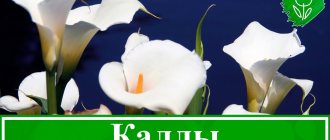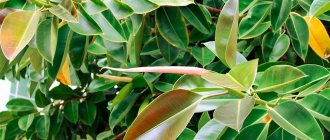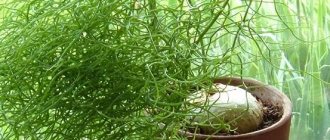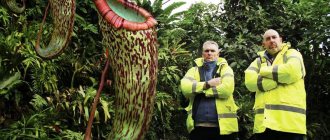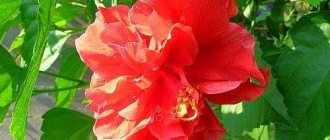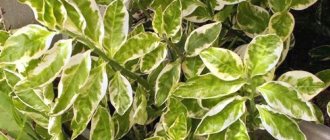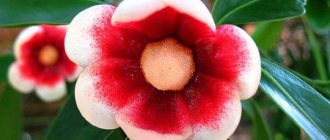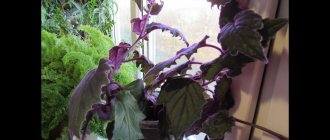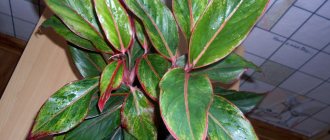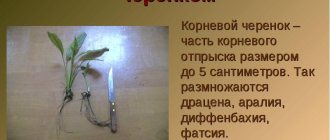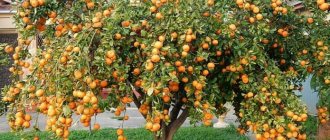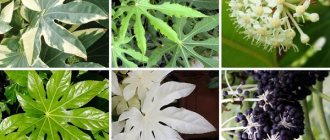Begonia is a beautiful plant native to South American forests, which received its name from the surname of the governor of Haiti. Thanks to the many bright colors of the flowers, the unique decorative attractiveness of the leaves and unpretentiousness in cultivation, this tropical guest has become a real favorite of indoor gardeners, and some of its varieties have even taken root in gardens.
The most beautiful varieties
There are over 1,500 varieties of these beautiful flowers, but only 125 of them are the most common. They are most often used for decorative purposes on balconies and window sills, in gardens and parks.
Garden varieties delight with colorful flowering in the summer and sometimes in early autumn. Indoor begonia impresses with its flowers even in winter. Depending on the variety, the plant can spread along the ground, like grass, or grow in the form of shrubs or subshrubs. Most often, all its existing species are combined into main groups according to the decorative attractiveness of leaves and flowers, and tuberous and bush varieties are also distinguished.
1
Decorative foliage
These varieties do not have an above-ground stem, and beautiful elongated leaves with edges grow directly from the root. This variety impresses with its amazing leaf colors: from standard green to red and silver. The presence of spots and edges on the leaves also adds to the attractiveness of the plant.
Rex or royal begonia
This is one of the most striking representatives of the beautiful flowers of this group of varieties. The elongated oval leaves with jagged edges impress with their variegated colors - from pink to purple and violet. But their colorful border around the edge - a contrasting silver or green hue - attracts even more attention.
Metallica
This variety received such a sonorous name for the characteristic appearance of the upper part of the leaves, which seem to be covered with a metal coating. The small leaves are olive green and have tiny teeth along the edges, which, combined with their glossy shine, gives the flower a particularly colorful appearance.
Begonia Bauer or tiger
This beautiful decorative deciduous begonia attracts with its original leaf colors. It was for their specific spotted coloring, reminiscent of a tiger skin, that it got its name. The leaves of this variety are small, serrated, heart-shaped, dark green in color and have characteristic spots.
The unique coloring and design patterns on the leaves of each individual plant of this species make it possible to assemble an amazing collection of flowers of the same variety, very different from each other. It is important to find the ideal place in the house to place the flower (neither in the shade nor in the sun) so that the Bauer begonia leaf retains its decorative appeal and does not dull its pattern. The plant should be watered frequently, but not overwatered.
Mason variety
This deciduous species is found in the wild in the forests of New Guinea. Flower growers highly value this variety for the unique pattern on its leaves, which is very similar to the Maltese cross. The dark or brown pattern contrasts with the light green leaves, which can take on a silvery tint in older plants. This variety also pleases with small pastel-colored flowers.
Cleopatra
This variety attracts connoisseurs of beautiful begonias with its incredibly decorative leaves, which are shaped like maple leaves. Their upper part is painted in bright green or olive color, and the lower part surprises with contrasting burgundy or crimson shades. The variety is also characterized by the presence of large elongated cuttings with silvery fibers. The height of such a decorative bush in a pot can reach up to 30 (less often - 50 cm). White and pink flowers delight with colorful blooms in winter.
Collar or cuff
This beautiful deciduous variety impresses with large leaves of light green shades on long stalks, which are bordered by a cuff of red hairs. In winter, the plant also pleases the eye with the colorful blooming of bright pink flowers.
2
Collar (Manicata)
Begonia "Collar"
This is a very unpretentious variety for home cultivation. The bush is quite large and spreading. It has large light green leaves, the diameter of which reaches 30 cm. Their upper part is glossy, and the lower part is covered with “cilia”. The edges of the leaf blades are cut and covered with small fibers. This begonia got its name because at the place where the cuttings are attached to the leaf, a kind of “cuff” is formed from red hairs.
This may be interesting: How to grow Cyperus (Papyrus) at home
Bush varieties
These include begonias, which are beautiful lush bushes with many side shoots. Their stems are thick and branched, similar to bamboo. The height of the bush can reach from 10 cm to 2 m. The leaves can be of very different shapes and colors, and the flowers are impressive with their colorful color and elegance. These bushes can bloom all year round.
Coral begonia
This bush variety, originally from the tropics of Brazil, is most popular among gardeners due to the particularly colorful color of the leaves and flowers. The oblong-shaped leaves are dark green on top and impress with numerous silvery dots. On the reverse side they are brownish-red. During the flowering period, these beautiful begonias are especially beautiful. They delight the eye with numerous dense inflorescences with an abundance of small pink flowers.
Fuchsia or multifoliate
This bush begonia, native to the tropics of Colombia, has highly branched stems, often reaching 1 m. The oval-shaped leaves have slightly jagged edges and impress with a glossy surface, most often colored in emerald shades. The plant is especially beautiful during the flowering period, when colorful fuchsia-like flowers appear, painted in bright red shades.
3
Spotted or Speckled (Maculata Raddi)
Begonia "Spotted" or "Speckled"
This is a bush type of begonia, a herbaceous subshrub with an erect stem, which under favorable conditions reaches about a meter in length and width. Therefore, it is grown most often in greenhouses and winter gardens. It has elongated, asymmetrical leaves in the shape of a heart with an oblique center. Their length is 10-15 cm, width - about 5 cm. The tip is pointed. Visually, the leaves resemble angel wings in their shape. (For this similarity, our grandmothers called this begonia that way). The leaf plates are very dense and glossy. Their rich green background is literally dotted with silvery-white spots. The back side of the leaves has reddish-brown-red shades. The petioles are short, about 2 cm. The flowers are of unusual shape, white or light pink. They are formed on a drooping peduncle hanging down in small inflorescences from April to July.
Coral (Corallina)
Previously, it was a separate species of begonia. Now they believe that this is a synonym for the “Spotted” begonia, i.e. its subspecies. This lush bush plant (over half a meter in height and width) has elongated-ovate leaves (up to 25 cm in length and up to 7 cm in width), with a serrated edge and a sharp tip. Their color is dark green, with white and silver inclusions in the form of spots or splashes. With the arrival of summer, a reddish tint appears on the back of the leaf. Flowering usually begins in spring. The buds are formed on the basis of fused petals of all shades of red, making the inflorescences look like luxurious berry clusters hanging down. The aroma of flowers is very subtle and refined.
Begonia "Coral" has its own popular varieties: "Lucerna" and "President Carnot".
Begonia "Lucerna"
Begonia "Alfalfa" is a reed begonia. Its stems are straight, more than a meter in height. The leaves are large, oval-heart-shaped, with distinct veining and a coarsely toothed edge. The leaves are dark green with white or silver specks, stripes or spots. The reverse side of the leaves is red-brown. Flowering occurs from March to September.
Begonia "President Carnot"
This is a bush with shield-shaped leaf blades, dissected at the base, and with a slightly toothed edge. The leaves reach 30 cm in length and 15 cm in width. Their green leaf surface is decorated with whitish spots.
This may be interesting: Thuja indoors - care at home
Tuberous varieties
Looking at the flowers of these begonias, you can’t help but think that they are close relatives of camellia, carnation or rose - the similarity is so great. Their heart-shaped leaves are usually colored in various shades of green. These flowers bloom for the longest time, from May to mid-autumn.
Begonia ampelous
Representatives of this variety are distinguished by long stems, cascading and decorated with numerous bright flowers. Most often they are grown in hanging pots, creating an original floral decor on the balcony. The varieties of this group with double flowers are especially popular - “Roxana” (orange color) and “Christie” (snow-white buds).
Bolivian begonia
In this plant, shoots up to 30 cm grow straight, and then form cascades in several tiers of beautiful inflorescences. "Santa Cruz Sunset" attracts the eye with flowers in red and orange shades. "Copacabana" is a creeping plant that attracts with colorful bell-shaped flowers, usually red in color.
Bouton de Rose
This variety is characterized by small compact bushes decorated with large snow-white double flowers. The beautiful pink edging around the edges gives them special beauty. The petals are gathered in the center to resemble a rosebud, which is what gave them their name.
Crispa Marghinata
This tuberous begonia in the garden is a gardener's favorite. Beautiful bushes with green leaves with a purple border can be grown both in a flowerbed and in flowerpots in the house. During the flowering period, this variety pleases with colorful lush white or yellow flowers with a pink or red border, which have a light sweet aroma.
Fimbriata pink
The lush flowers of a soft pink hue of this variety are very reminiscent of carnations. The flowers have a pleasant fragrant aroma, which is very rare for the tuberous varieties of this plant. Fimbriata pink looks great in hanging flowerpots on balconies. You can plant begonia of this species in open ground. But it is worth remembering that this plant is very fragile and must be protected from the winds.
Belleconia
This terry begonia is classified as a root variety in most catalogs and is considered one of the most attractive among them. Long shoots are crowned with beautiful large flowers, which can be of different colors. The most impressive varieties of this variety are those with bright red, scarlet, peach and pink flowers. Belleconia is an outdoor begonia. It is most often grown indoors, but it grows better outdoors. Therefore, it is recommended to replant the plant in open ground as soon as it gets warmer.
4
Features of begonia
In addition to the approximately 1 thousand species existing in nature, there are also about 2 thousand hybrids of this plant. In this regard, there is simply no average description of this plant. In addition, such plants in various classifications are divided into decorative flowering and decorative deciduous, deciduous and evergreen, perennials and annuals, creeping and tall, rhizomatous and tuberous. Flower growers grow a huge variety of begonia species at home, and all of them need to be cared for in approximately the same way when cultivated at home.
BEGONIA FLOWERING ROOM - GROWING
Decorative flowering varieties
Everblooming
This group includes many varieties of begonias that bloom all summer and are unpretentious to weather conditions. Among the most famous is the “Baby Wing” variety, which is impressive with colorful flowers of various colors.
In the photo: Baby Wing variety
“Ambassador” is no less in demand, which includes varieties with green leaves with edges cut in the form of an original red stripe. Their flowers impress with a wide range of colors.
Elatior
This hybrid variety was bred in England. This type of begonia blooms all year round, which is why it is called winter begonia. Compact bushes with lush flowers and glossy leaves in the shape of an asymmetrical heart with jagged edges look beautiful in pots on the windowsill.
Gloire de Lorraine
This variety can also bloom not only in autumn, but also in winter. The plant is not tall, but very spreading, especially attractive due to the drooping clusters of small flowers of bright pink color.
5
Legends about begonia and its symbolism
According to one of the legends of the South American Indians, their goddess of the Sky, Tamaya, turned into a beautiful begonia flower. Descending to earth once a year in the form of a beautiful woman, she was captured by the conquistadors. They wanted to take her to Europe, but upon arrival they saw only a dried flower in the hold. A French botanist returned the plant to its homeland, and the Indians were able to revive it. In China, they say that beautiful begonia flowers arose from the tears of a girl in love.
It is believed that these indoor flowers can attract happiness, help you find good luck in finances and meet love. Astrologers claim that begonia is under the favorable auspices of the Sun and Venus and is able to relieve blues and depression.
Looking at its many beautiful varieties, it is difficult to disagree with this statement. The bright colors of flowers and the original shapes and colors of leaves delight the eye and set the mood for positivity.
Therefore, beautiful begonias can be safely given as a gift, without fear of the negative connotation of this plant. But it is better to buy them at a flower shop rather than at markets.
6
Possible problems and care errors
Begonia, like any flower, gets sick mainly due to errors in care. How to grow healthy begonia - let's name some mistakes and ways to solve them.
Begonia doesn't bloom
Usually the reason is an incorrectly selected fertilizer. If it is nitrogenous, then the process of bud formation will naturally be greatly inhibited. This type of fertilizer is suitable for deciduous types.
Begonia Bauer.
Another option is the wrong place for the plant, or the wrong temperature. The solution is to move the flower to another location and change the type of feeding.
Flower buds fall
The plant is experiencing stress. This usually happens in three cases:
- Excessive soil moisture.
- Wrong place.
- Excess fertilizer.
The solution is to find the cause and eliminate it.
Leaves turn yellow and curl
Sick begonia.
This is a symptom of soil depletion or drying out. Perhaps pests have appeared in the roots; to do this, they can be rinsed in a solution of potassium permanganate. Leaves turn black from excess moisture. The fragility of the plant indicates a lack of moisture or nutrition. Pale – lack of light. If the flower stretches upward, then it does not have enough sun, it spreads or crumbles to the sides - it is too dry.
Rot in the soil or at the base of the flower
This is one of the manifestations of a serious problem - pests have infested the roots and soil. This problem usually occurs if the plant is over-watered. Leaves with plaque must be moistened and the soil must be completely replaced. The flower must be treated with a fungicide. Other parasites include aphids and mites. In this case, begonia is treated with corocidal and insecticidal preparations.
Begonia as a useful flower in the house
Begonia is an ideal houseplant for color therapy. Varieties with orange flowers improve your mood and get rid of the blues, and the yellow color of the inflorescences allows tired eyes to relax.
Red begonia sets you up for positivity, adds vitality and strength to achieve your desired goals. In Asia, it is these flowers that are used to decorate the bride, which symbolizes fiery passion that will not fade away in marriage.
In addition, begonia is considered one of the best indoor plants for purifying indoor air. The leaves of this flower absorb dust well. It is also recommended to place pots with begonias near the computer to neutralize harmful radiation.
Varieties with red flowers can be placed in the bedroom, and to decorate the kitchen you should choose varieties with decorative leaves.
7
